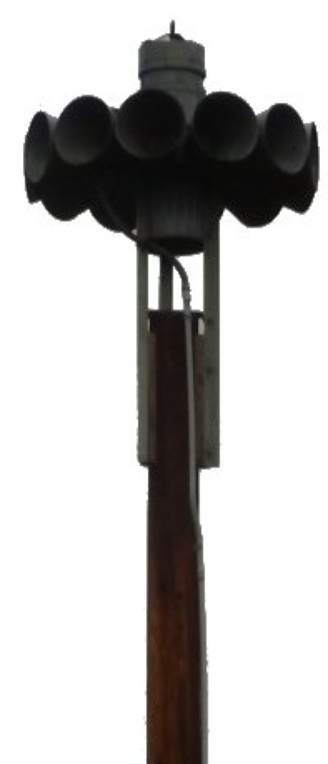The powerful House Appropriations Committee has fully funded the Tsunami Warning Program for Fiscal 2018, snubbing President Trump’s attempt to eliminate $11 million from a system considered indispensable by North Coast preparedness officials in the event of a major Pacific earthquake.

The Appropriations Committee wields power over the federal purse strings and its Fiscal 2018 spending bill includes $486 million for the two Tsunami Warning Centers and for related National Weather Service analysis and forecast operations.
In its July 13 report, the committee stated, “The recommended level will support 24-7 weather surveillance, forecast and warning services.”
Categorically rejecting Trump’s budget reductions, the Republican-controlled panel went further and hiked National Weather Service spending. In total, it approved $973 million for the service’s operations, research and facilities, almost $37 million above what the White House had asked.
Trump had sought a six percent cut from Fiscal 2017 that would have closed one of the tsunami warning centers and slashed all funding for preparedness and innovation research, according to the American Association for the Advancement of Science, which opposed the administration’s budget proposals.
The Tsunami Warning Program is designed to forecast ocean wave arrival times after an earthquake and provide emergency responders with early estimates of the potentially deadly inundations in regions like the Redwood Coast.
Dorie Lanni, manager of Humboldt County’s Office of Emergency Services, said in a telephone interview Friday that the shutdown of the National Tsunami Warning Center in Palmer, Alaska – 42 miles northeast of Anchorage – would have left the Redwood Coast (as well as Alaska, British Columbia, Oregon, Washington State and California) solely dependent on the Pacific Tsunami Warning Center on Ford Island, Hawaii, with no backup.
Redundancy is essential, she said, to ensure that warnings are in fact delivered as quickly and accurately as possible.
The Trump White House also asked Congress to zero out funding for NOAA’s system of 39 worldwide tsunami detection buoys, including some two dozen in the North Pacific. They provide backup information for tracking earthquake tremors and tide gauge data.
From water pressure changes, the far-flung, deep-ocean buoys detect the occurrence of tsunami waves triggered by undersea earthquakes and record the resulting changes in deep ocean sea levels.
The buoys have two main parts – a pressure sensor anchored to the sea floor and a surface buoy. The sensor measures the change in height of the water column from associated changes in the water pressure. The water’s height is transmitted to the surface buoy by acoustic telemetry and relayed via satellite to the Tsunami Warning Center.
False alarms are common in detecting tsunamis, but digital seismograph networks can provide faster reports about their sources and magnitude, according to the National Science Foundation. On the other hand, detection buoys can be costly and difficult to maintain in the hostile ocean environment.
The Appropriations Committee’s control of spending levels makes it the most powerful panel in the House, rivaled only by the tax-writing Ways and Means Committee. It is probable therefore – though not guaranteed – that the tsunami warning and National Weather Service recommendations will prevail when the full House takes up the spending bills for Fiscal 2018, which begins Oct. 1.
The legislative snags are several. Republicans are divided internally over the adoption of a House Budget Resolution, the overarching fiscal blueprint that sets notional budget totals, allocations and entitlements to guide the chamber’s committees in assembling their annual authorization and appropriation spending bills.

The budget resolution is supposed to be completed in April. The current deadlock is rooted in the perennial battle over increasing defense spending and cutting social spending. The semblance of a budget pact appeared to be emerging as the Union went to press, but it remains subject to last-minute roadblocks that could delay House floor action on the annual spending bills.
Among other things, lawmakers face mounting pressure over raising the national debt ceiling yet again, always a contentious issue.
After House floor action, a conference committee is charged with reconciling differences between the House and Senate appropriations measures.
###
Paul Mann writes for the Mad River Union. Subscribe here.
CLICK TO MANAGE